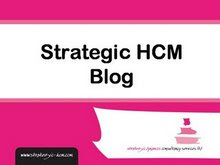
Today was the final day for entries and I’ve been looking through some of them to help the judging panel of Tim O'Reilly, Clay Shirky, Gary Hamel, Umair Haque, Eric Hellweg, Lynda Gratton, James Manyika at McKinsey and Mark McDonald at Gartner to pick a shortlist which will be further developed over the rest of the month.
Amongst the splatterings of --- 2.0’s, --- 3.0’s and --- 4.0’s(!), most of the hacks (not including the love hack which we’ve not completed yet) deal with:
- Perspectives (eg content, context and culture, co-creation vs compliance, people centricity, efficient office). I particularly like this one about appreciate knowledge networks as I think most people find web 2.0 a pretty appreciative place, and I’d like to see this as one of its aspects we bring into our organisations. Shame about the software plug at the end though.
- Organisation eg networked and organic / cell based organisations. My favourite hack is this one on communities which I think provides a great description of the way that organisations might work considerably differently in future.
- Process (eg distributed leadership, authentic leadership, pay transparency etc). My favourite here is this hack about quests. Partly because it provides a practical application of gaming. And also because I think it could be a real advance on 20 / 10 % time. One of the things employees often struggle on under these arrangements is identifying what they're going to work on. The quests / open space approach provides a good organisational approach to help employees identify, choose and share areas to work on
- Technology (mainly plugs for particular products – grrr! - but also including case studies from 3M, Alcatel-Lucent and Nationwide (US). My favourite is the case from CEMEX, describing their use of a system, Shift, to support innovation, as I think this nicely describes the central role of culture in a social technology project: “However, the most important benefits are not so easy to measure. They include the adoption of the latest in collaboration practices and benchmarks, visibility for employees on all levels of the company residing in the quality of their contributions, not their hierarchical position, and an overall more positive atmosphere that encourages employees to become a part of something bigger than them. Most importantly, Shift is helping CEMEX move towards a new culture of innovation through global collaboration, which is made possible for the first time by the new technologies that bring us closer to each other. Now every employee is empowered to connect with colleagues, share their ideas, and make live interactions a part of their daily experience. The new era of collaboration at CEMEX starts now, with Shift.”
My only issue with all of these is that they miss the crucial and central role of people. So I’ve added these two hacks on people being social, and on change 2.0.
And I suppose I could add that I think it’s a shame that the MIX itself can’t exhibit more of the properties of web 2.0 itself. The above hacks and stories are being judged by a ‘stellar roster of judges’ but do we really need these, and a hierarchy of mavericks, mixers, hackers (of which I am one) and others to promote 2.0 perspectives, organisations, processes and technologies? – or do we need MIX 2.0 as well?
- Consulting - Research - Speaking - Training - Writing
- Strategy - Team development - Web 2.0 - Change
- Contact me to create more value for your business
- jon [dot] ingham [at] social [dash] advantage [dot] com
.



















No comments:
Post a Comment
Please add your comment here (email me your comments if you have trouble and I'll put them up for you)